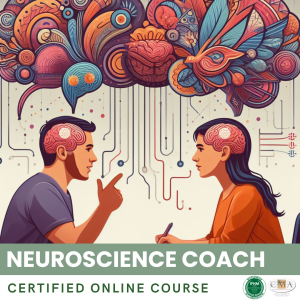Pets increasingly occupy an important place in our society, and their presence extends well beyond the private sphere. They now accompany humans in a multitude of professional, social, and therapeutic contexts, thus revealing the full extent of their abilities and benefits. Whether at work, in institutions, or in public spaces, animals provide emotional support, promote social interactions, and contribute to the well-being of the people they interact with.
One area where pets excel is in the field of assistance and therapy. Blind guide dogs are the most well-known example: specially selected and trained, they enable visually impaired individuals to move safely and gain independence. But their role does not end there. Assistance dogs help people with motor disabilities, epilepsy, diabetes, or autism spectrum disorders. They can learn to pick up objects, open doors, detect an imminent crisis or ease stressful situations. Their reassuring presence and adapted behavior are a valuable aid in daily life.
In the field of mental health, animal-assisted therapy (AAT) is experiencing a remarkable boom. Dogs, cats, horses, and even rodents are increasingly integrated into care protocols for a variety of disorders such as depression, anxiety, phobias, and addictions. Their calming presence, their warm contact, and non-judgmental demeanor helps to create an atmosphere of trust conducive to conversation and therapeutic work. They act as mediators between the patient and the therapist, facilitating the expression of emotions and the exploration of difficulties. Studies have shown that AAT can significantly reduce anxious and depressive symptoms, improve self-esteem and promote social skills.
Institutions accommodating vulnerable populations such as nursing homes, hospitals, or prisons, are increasingly resorting to resident animals or visitation programs. Regular presence of a dog or a cat in a care home, for example, provides emotional comfort to isolated residents, stimulates social interactions, and revives happy memories. Stroking a familiar animal, talking to it, taking care of it is all activities that give meaning to daily life and maintain a connection with the outside world. In pediatric wards of hospitals, visits from specially trained dogs bring a moment of joy and relaxation to children facing illness. They help to ease their fears, distract them from pain and facilitate communication with healthcare staff.
But the presence of pets is not limited to specialized institutions. Increasing numbers of businesses and workplaces are opening their doors to animals, convinced of their benefits on employee well-being and productivity. Studies have shown that having a dog in the office can reduce stress, foster creativity, and improve team cohesion. Cuddle breaks and walks with the dog are opportunities to relax, chat informally and establish bonds between colleagues. Some companies even implement four-legged “chief happiness officers” responsible for ensuring a good atmosphere and defusing tensions.
Finally, the presence of pets in public spaces is increasingly accepted and valued. Many cities are setting up dog parks and beaches where dogs are allowed, thereby acknowledging their social role and need for exercise. In public transport, animals are generally admitted under certain conditions, allowing their owners to move freely with them. Some cafes and restaurants even publicize their pet-friendly attitude by giving a warm welcome to four-legged companions. This development reflects a change in perception on the position of animals in our society and a desire for harmonious cohabitation.
For the Grief Coach specializing in pet mourning, understanding the diversity of contexts in which pets evolve is essential. This enables better understanding of the nature of the bond that united the bereaved individual with their companion and measuring the impact of the loss on a daily basis. Losing an animal that shared one’s workplace, for example, is like losing a colleague, a confidant, and a source of daily well-being. Losing an assistive dog means losing a life partner that made certain activities and social interactions possible. By being attentive to these specifics, the coach can provide tailored and personalized support.
Knowledge of the different contexts of animal presence will also enable the coach to direct the bereaved person towards appropriate resources. For instance, they could suggest engaging in an animal therapy association, to give new meaning to their bond with animals and honor the memory of their departed companion. They could also encourage sharing their experience with others faced with the loss of a “professional” animal, in order to break isolation and feel understood.
Lastly, by being aware of the social and therapeutic value of pets, the coach can help the bereaved individual validate their grief in the face of potentially doubtful surroundings. They can emphasize that the loss of an animal is not only an emotional loss but also a loss of social connection, balance, and everyday reference points. By validating the uniqueness of each human-animal relationship, it allows the person to experience their grief without shame or guilt, and to take the necessary time to rearrange their life and relational commitments.
Key takeaway points:
– Pets are present in many professional, social, and therapeutic contexts, demonstrating their skills and benefits.
– Assistance dogs and therapy animals provide precious support to individuals suffering from disabilities, mental disorders, or illnesses, promoting their independence, well-being, and social reintegration.
– Institutions (care homes, hospitals, prisons) resort to resident animals or visiting programs to provide comfort, stimulation, and social link to vulnerable populations.
– Increasingly more businesses are allowing animals in their premises to reduce stress, foster creativity, and improve team cohesion.
– Animals’ presence in public spaces is increasingly accepted and valued, with arrangements of dog parks, permissible beaches, and pet-friendly places.
– For the Animal Grief Coach, understanding the diversity of animal presence allows a better comprehension of the nature of the human-animal bond, measures the impact of the loss, and offers adjusted support.
– The coach can point the bereaved person to appropriate resources (associations, support groups) and help validate their grief in the face of potentially doubtful surroundings, underscoring the social and therapeutic value of pets.
👉 To download docx (Editable) file click here : Click here
👉 To download PDF file click here : Click here
👉 To download MP3 file click here : Click here






